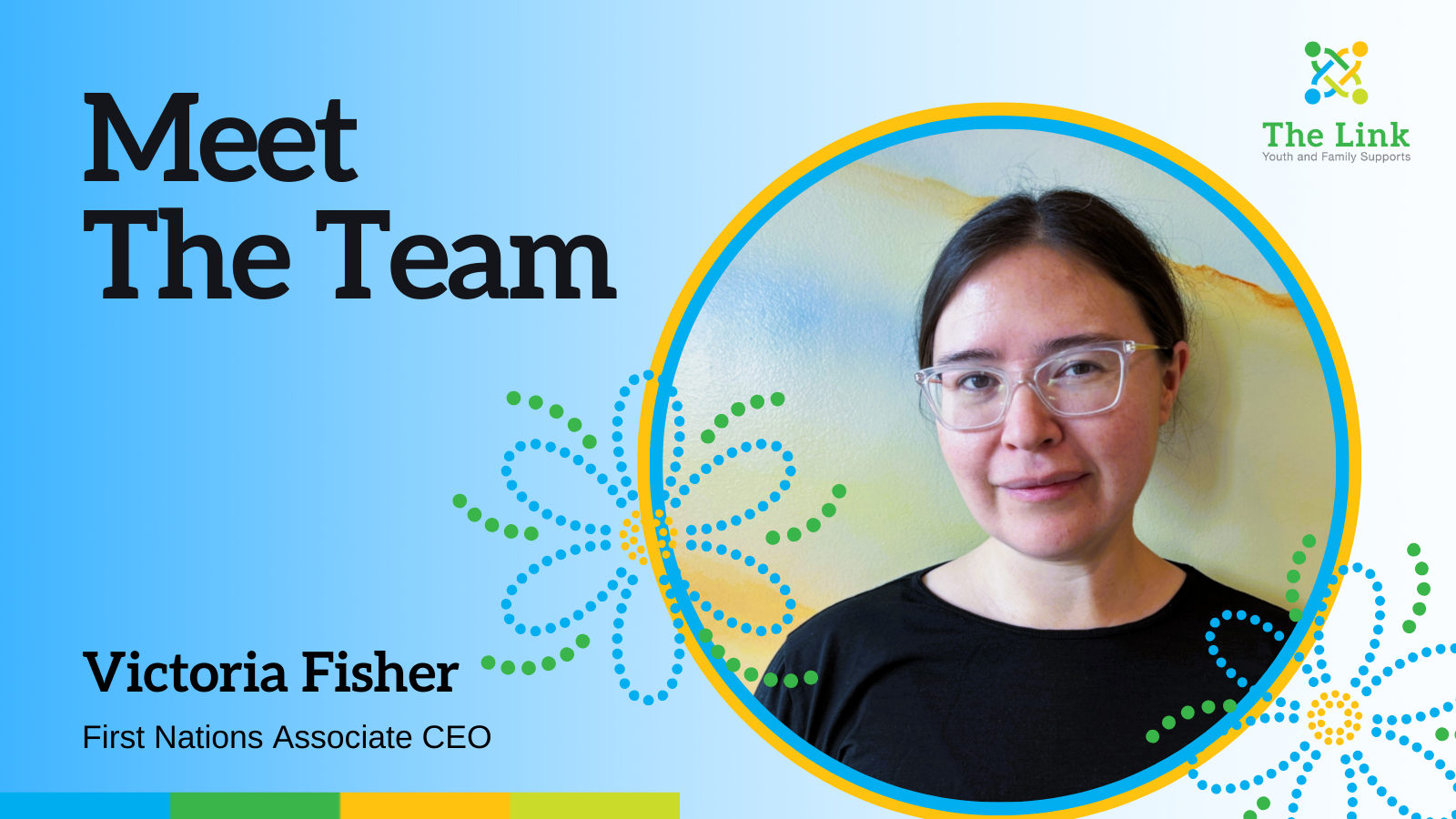Meet Victoria Fisher: New First Nations Associate CEO at The Link

We recently sat down with Victoria Fisher, the new First Nations Associate CEO at The Link: Youth and Family Supports, to learn more about her vision and her plans for fostering inclusivity, supporting First Nations communities and engaging youth and families in shaping the future of the organization.
Victoria Fisher’s journey as the new First Nations Associate Chief Executive Officer at The Link: Youth and Family Supports has been one rooted in deep respect for First Nations communities and a commitment to fostering change and inclusivity. A member of Ebb and Flow First Nation, Victoria brings with her a wealth of experience and a strong sense of purpose, eager to make a positive impact on both the organization and the communities it serves.
When asked about her vision for leadership, Victoria shared her belief in the importance of collaboration. For her, understanding each person’s unique journey allows for a more unified approach to implementing new initiatives and changes. “Together, we can work as one team to create meaningful impact,” she says. Victoria is aware of opportunities for transformative practice within organizations like The Link. “This is something we all need to be a part of,” she noted. For Victoria, her role is to foster self-reflection and critical thinking. “I want to facilitate a space where we all consider how our perspectives may impact others. Together, we can work toward a more inclusive and self-aware workplace,” she said.
Victoria’s vision reflects a strong focus on ensuring the voices of First Nations communities and families are heard within the organization. “It’s essential to include the voices of those we serve,” she emphasized. Victoria sees opportunities for The Link to adapt its structure to be more inclusive, including the potential revival of the youth council, which would give young people a direct role in shaping decisions that affect them. Engaging families and communities in relationship-based work is central to Victoria’s goals. “In child welfare, a lot of the authority and resources lie with service providers, but we need to consider the intergenerational impacts of systemic barriers,” she said. It’s about creating balance in decision-making and resource allocation, ensuring that First Nations communities have the agency to shape their own futures.
As the organization embarks on a community consultation process with First Nations communities, Victoria sees this as a crucial step in aligning The Link’s programs and initiatives with First Nations traditions and values. “This process is about building relationships over time and allowing our services to evolve in a way that reflects the values of the communities we serve,” she explained.
Building trust with First Nations partners and stakeholders is another key priority for Victoria. “We need to approach this with a sense of humility.” She envisions a future where young people and families are not just recipients of services, but active participants in the decisions that impact their lives. “The people we serve should be reflected in how we guide and deliver services.”
Victoria’s journey at The Link is just beginning, but her vision is clear. “I think the key to success is creating something new, rather than just changing what’s already there,” she said. Together with the team at The Link, she plans to break free from colonial structures and build an inclusive, responsive organization that prioritizes the voices and needs of First Nations communities.
